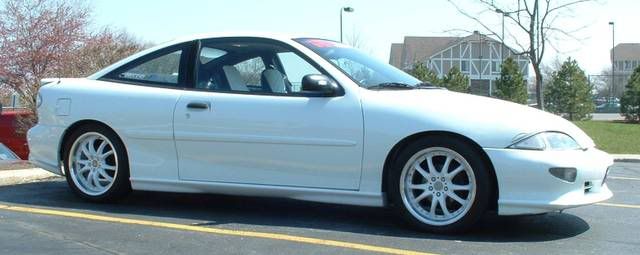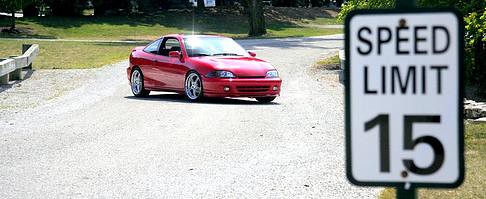First the good news. Struggling auto giant General Motors (GM) appears to have hit on a way to sell more cars and trucks. The bad news: It's an incentive program. After a weak sales month in May, GM announced on June 1 that it would give anyone the same generous discount on its 2005 models that its employees and their families get. That means GM will sell any of its vehicles for something close to the invoice price paid by dealers.
The deal varies. But GM says a base-model Chevrolet Silverado pickup stickered at $21,765 would sell for $16,226. Even Cadillac offers the employee deal. A $30,885 Cadillac CTS sedan will go for $27,790.
GM's plan so far is having the desired effect. Not only is it driving June showroom traffic dealers say but it's also getting shoppers who were thinking of buying from someone else to look at GM's models. Says Steve Hill, GM's director of retail markets and an architect of the strategy: "The early results have been outstanding." A survey done this week by CNW Marketing Research shows that 21% of buyers who intended to buy from another company will consider a GM model under the incentive deal.
The auto giant sure needs the sales. At the end of May, GM had 1.2 million vehicles on dealer lots -- about 10% more than usual, says Merrill Lynch analyst John A. Casesa. Worse, GM's biggest money makers -- the Silverado and GMC Sierra pickups and large SUVs like Chevy Tahoe -- account for more than one-third of the bloated stock.
But GM faces a huge downside with this. The obvious problem is that it's losing money, and jacking up rebates only makes it tougher to stanch the red ink. Even worse, GM has reset the clock on its efforts to pull back on incentives and stop consumers from waiting for the deal. Now buyers will continue to wait to see ads in newspapers and on TV for GM's next big offer before shopping. And by cutting prices, GM just ensures that it will need more deals down the line to close a sale.
The profit impact is huge. GM's automotive operations lost $1.3 billion in the first quarter, and in North America the company lost $2,300 per vehicle sold. One big reason is that GM's average sale price, after all the rebates and 0% financing deals are taken into account, is just $20,659. That's the lowest among major carmakers. Toyota (TM) is tops with $26,514, according to Harbour & Associates, a Troy (Mich.) consulting firm.
This program won't help with that. GM already spent $5,100 per vehicle in incentives last month, according to CNW. The new program, while not hugely expensive, could add a couple hundred dollars to GM's incentive spending, says Art Spinella, president of CNW Marketing Research
Plus, buyers will need big deals for a long time to come. Here's why: When GM discounts a new car, that also cuts the prices on used cars. The vehicle's residual value -- or resale value after three years -- also drops. So when a buyer returns to the dealership in a few years looking to trade in for a new model, the used car is worth less than he thought because even new cars have lower prices. Sometimes the owner will owe more on the loan than the car is worth. Dealers call this being "upside down" on the loan. So the customer may need a big rebate just to pay off his old loan.
GM's chief market strategist, Paul Ballew, says the company has been able to manage this. "We don't see customers being so upside down in the note that we can't make the transaction work," he reports. Sure -- GM makes the deal work by spending enough to get the buyer in a new car.
The new incentive deal poses a marketing challenge, too. GM buyers already expect a discount of more than $4,400 per vehicle, says CNW's Spinella. Now, GM will have to spend just to keep showroom traffic going. "Buyers expect a deal," says Spinella. "I don't know what GM will do on July 6 when this program expires."
So why would GM embark on such a strategy? There's a reason. Mark LaNeve, who took over as GM's vice-president for sales and marketing on Mar. 1, wants to switch to a new pricing structure. GM currently slaps inflated sticker prices on its cars, knowing that soon enough it'll offer a huge rebate. The rebate acts as a come-on in the market.
By pricing cars closer to what they think customers want to pay, GM could get away from the rebate game. When the 2006 model year cars hit dealerships in late summer, the carmaker will price some nameplates closer to the forecasted transaction price, says GM's Hill.
But until then, GM will be cutting huge deals. And its profits will keep taking a big hit.
The AP.
>>>For Sale? Clicky!<<<
-----The orginal Mr.Goodwrench on the JBO since 11/99-----


















